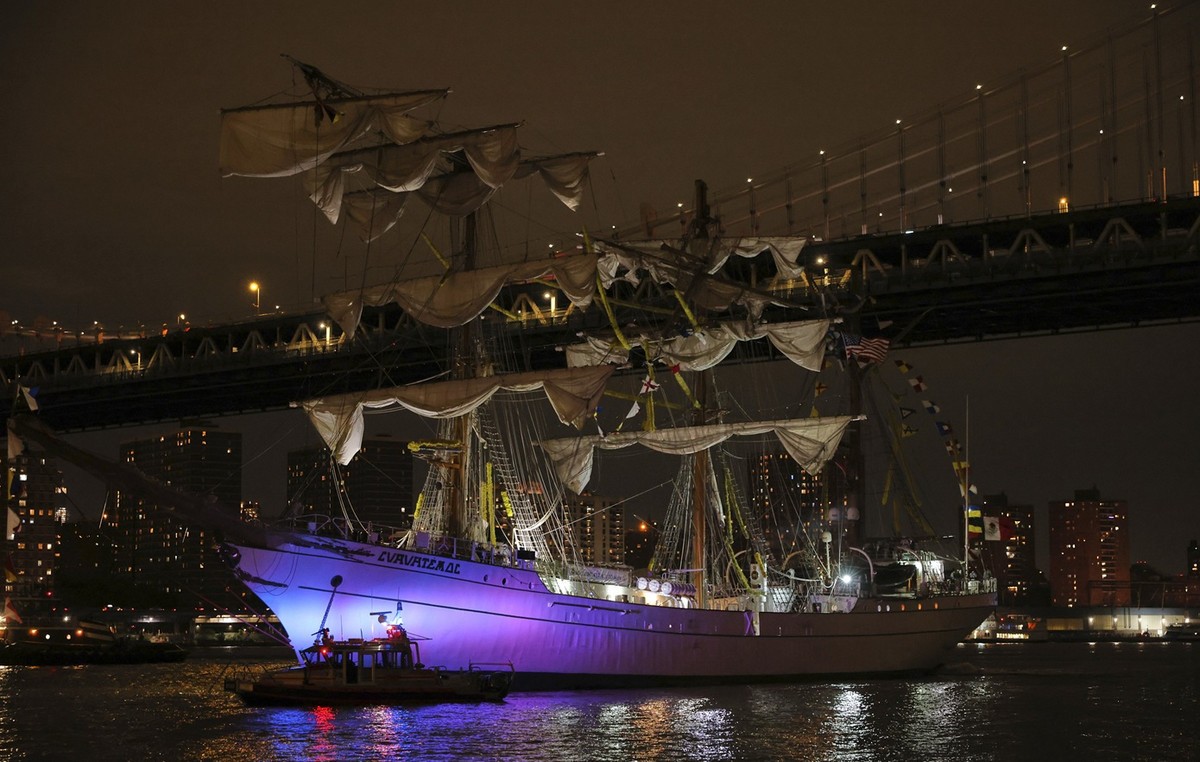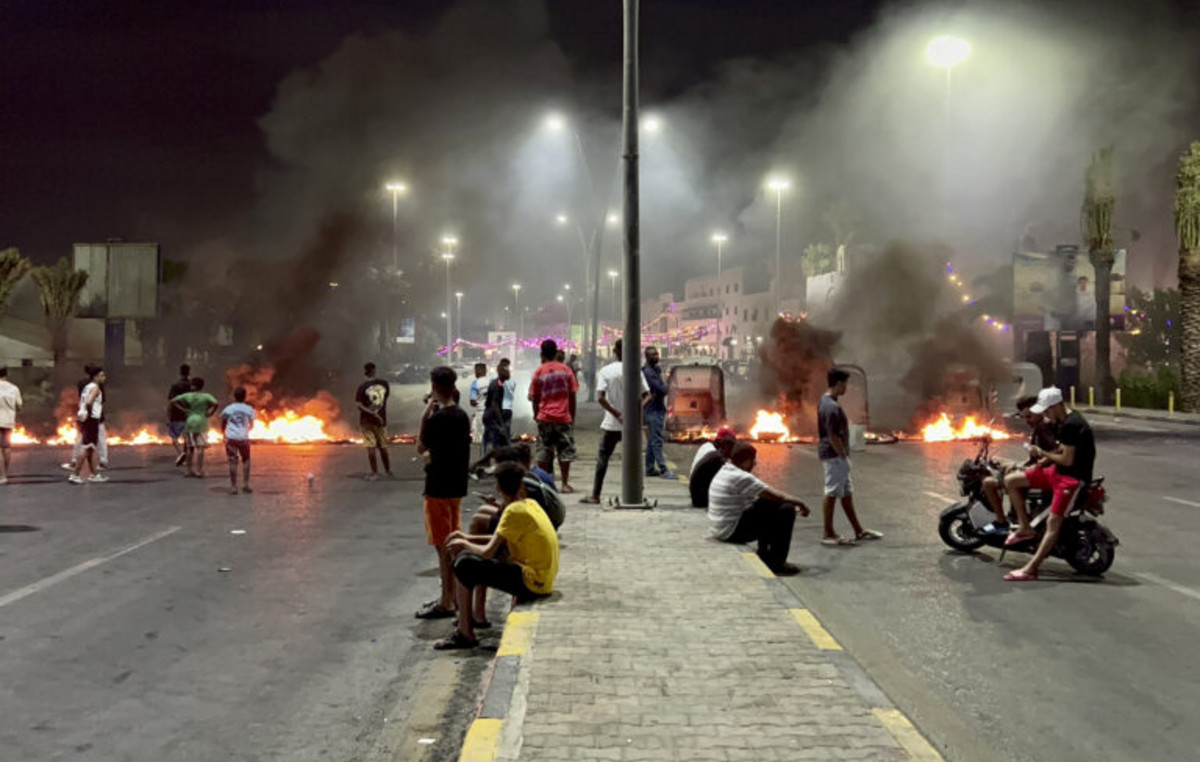Every day, Morris Malambile loads his wheelbarrow full of empty plastic containers and pushes it from his house to the nearest tap. It’s a lot farther than the normal walk to the kitchen sink – just under a mile away – but it’s not the distance that bothers him.
It’s the potholed road, which passes between compact communities and beige homes financed by the government, and makes it difficult to balance containers full of 70 liters of water on its return.
“Home feels far away when you’re pushing 70 kilos of water in a wheelbarrow,” said the 49-year-old resident of the impoverished South African township of Kwanobuhle.
Faucets dried up in parts of Kwanobuhle in March, and since then, thousands of residents have depended on a single community faucet to supply their homes with clean water. And the township is just one of many in the affected Nelson Mandela Bay area in the city of Gqeberha – formerly known as Port Elizabeth – that rely on a system of four dams that have been drying up for months. There was not enough rain to replenish them.
A week ago, a dam shut down because the levels had dropped too low to extract any relevant water – its pipes were just sucking up mud. Another is a few days away from emptying.
Now much of the city is counting down to “Day Zero,” the day when all faucets run dry, when no significant amount of water can be extracted. That will be in about two weeks, unless authorities seriously speed up their response.
The wider Eastern Cape region of South Africa suffered a severe multi-year drought between 2015 and 2020, which devastated the local economy, particularly the agricultural sector. There was only a brief delay before returning to drought in late 2021.
Like many of the world’s worst natural resource crises, severe water shortages here are a combination of mismanagement and weather patterns distorted by man-made climate change.

In addition, thousands of leaks throughout the water system mean that much of the water leaving dams may never reach homes. Poor maintenance, such as a faulty pump in the main water supply, only made the situation worse.
That left Malambile – who lives with her sister and four children – with no choice but to ride a wheelbarrow around town every day for the past three months. Without this daily ritual, he and his family would not have clean water.
“People who don’t live here have no idea what it’s like to wake up in the morning, and the first thing on their mind is water,” Malambile said. His family has enough containers to store 150 liters of water, but each day he fills up about half of it while the rest is still in use at home.
“Tomorrow these are empty, and I have to bring them back,” he said. “This is my routine, every day, and it’s exhausting.”
Countdown to day zero
The prospects for significant rainfall to help replenish the reservoirs here look bleak, and if things continue as they are, around 40% of the city of Gqeberha will be without running water.
The Eastern Cape relies on climate systems known as “cut-off minimums”. Slow weather systems can produce rainfall in excess of 50 millimeters in 24 hours, followed by days of persistent wet weather. The problem is, that kind of rain just isn’t coming.
The next few months do not paint a promising picture either. In its Seasonal Climate Outlook, the South African Weather Service predicts below-normal rainfall.
This is not a recent trend. For nearly a decade, the catchment areas of the main supply dams in Nelson Mandela Bay have received below-average rainfall.
Water levels have slowly decreased to the point where the four dams are at a combined level of less than 12% of their normal capacity.
According to city officials, less than 2% of the remaining water supply is actually usable.
Cape Town’s 2018 water crisis is still fresh in people’s minds here, which was also triggered by the previous severe drought as well as management issues.
City dwellers queued for their individually rationed 50 liters of water a day, fearful of reaching Day Zero. He never, but was dangerously close. Strict rationing allowed the city to halve its water use and avoid the worst.
With no heavy rain forecast, Nelson Mandela Bay officials are so concerned about their own Day Zero and are urging residents to drastically reduce their water use.
“They just don’t have a choice,” said the municipality’s water distribution manager, Joseph Tsatsire.
“While it is difficult to monitor how much each person uses, we hope to convey the message that it is crucial for everyone to reduce consumption to 50 liters per person daily,” he said.

To put that in perspective, the average American uses more than seven times that amount, the equivalent of 82 gallons (372 liters) a day.
While parts of the city will likely never feel the full impact of a potential Day Zero, a number of interventions are underway to help residents in the so-called “red zones” where their taps inevitably run dry.
Earlier this month, the South African national government sent a high-ranking delegation to Nelson Mandela Bay to take control of the crisis and implement emergency strategies to stretch the city’s dwindling last supply.
Leak detection and repairs have been the focus, while plans are being made to extract “dead storage water” below current levels from supply dams.
In some places, wells were drilled to extract groundwater.
Certain interventions – including fixing leaks and transporting water – mean that some who have lost their water supplies at home are starting to get a trickle from their faucets at night.
But it’s not enough and officials are looking for bigger, longer-term solutions to a problem that’s only set to get worse as the Earth warms.

South Africa is naturally drought-prone, but the kind of multi-year drought that causes so much misery and disruption is becoming more frequent.
A desalination plant – to purify ocean water for public consumption – is being explored, although these projects require months of planning, are expensive and often further contribute to the climate crisis when they run on fossil fuels.
People in Kwanobuhle are anxious about the future, wondering when the crisis will end.
At the local community tap, Babalwa Manyube, 25, fills her own containers with water while her 1-year-old daughter waits in her car.
“Flushing toilets, cooking, cleaning — these are problems we all face when there is no water in the taps,” she said. “But raising a baby and having to worry about water is a whole different story. And when will it end? Nobody can tell us.”
adaptation at home
In Kwanobuhle, public housing is for people with little or no income.
Unemployment is rife and crime is on the rise. The streets are full of locals chasing money. Old shipping containers function as makeshift barbershops.
Across the subway is Kamma Heights, a new leafy suburb perched on a hill with a beautiful, clean view of the city.
It’s punctuated by several newly built luxury homes, and residents can be seen sitting on their porches, enjoying the last rays of sunlight before the sun dips below the horizon.
Some residents of Kamma Heights are wealthy enough to guarantee a backup supply of water.
Rhett Saayman, 46, breathes a sigh of relief every time it rains and he hears the water flowing in the ponds he’s built around his home over the past two years.
His long-term plan to save money on water turned out to be an invaluable investment in securing his home’s water supply.
Saayman has a storage capacity of 18,500 liters. Water for general domestic use, such as toilets, passes through a 5 micron particulate filter and a carbon block filter, while water for drinking and cooking passes through a reverse osmosis filter.

“We still rely on municipal water at times when we haven’t had enough rain, but that is two or three times a year, and normally only for a few days at a time,” he said.
“The last time we used municipal water was in February and since then we have had enough rain to sustain us.”
He added: “Looking at the way things are going around town, it’s definitely a relief to know that we have clean and enough water to flush our toilets and shower. Our investment is paying off.”
Residents in many parts of the bay are being asked to reduce their consumption so that water can be channeled through temporary pipes placed in strategic locations so that water can be diverted to areas most in need.
That means some of the city’s more affluent neighborhoods, like Kamma Heights, could see a big drop in their water supplies, and they’ll also have to queue at community taps, just as those in Kwanobuhle are doing.
Looking ahead, local weather officials painted a worrying picture of the coming months, with some warnings that the problem has been left behind for so long that reversing it may be impossible.
“We have been warning city officials about this for years,” said Garth Sampson, a spokesman for the South African Weather Service at Nelson Mandela Bay.
“If you want to blame politicians and officials for mismanagement, or the public for not saving water, it doesn’t matter anymore. Pointing the finger won’t help anyone. The bottom line is that we are in crisis and there is very little we can do.”

According to Sampson, the watersheds that supply Nelson Mandela Bay need about 50 millimeters of rain in a 24-hour period for there to be any significant impact on dam levels.
“Looking at the stats from the last few years, our best chance of seeing 50mm events is likely to be in August, which is worrying,” he said.
“The only way this water crisis will end is with a flood. But luckily, or unfortunately – depending on who you ask – there are no forecasts suggesting rain of this magnitude anytime soon.”
Source: CNN Brasil
I’m Susan Karen, a professional writer and editor at World Stock Market. I specialize in Entertainment news, writing stories that keep readers informed on all the latest developments in the industry. With over five years of experience in creating engaging content and copywriting for various media outlets, I have grown to become an invaluable asset to any team.







